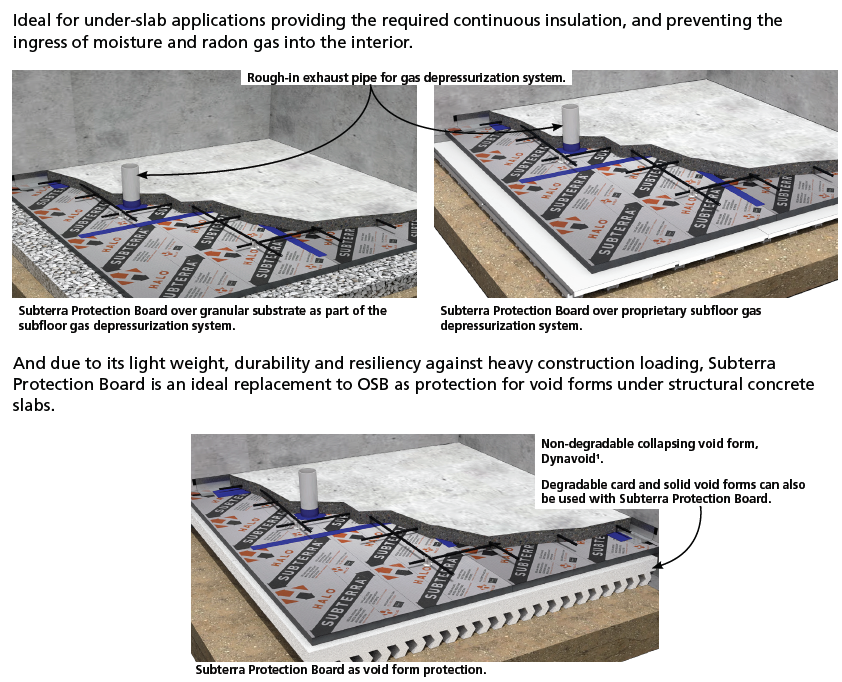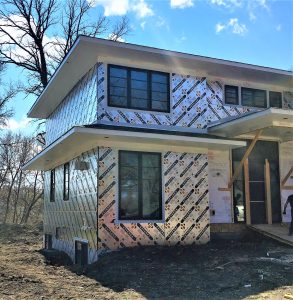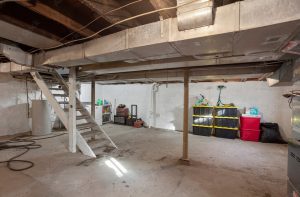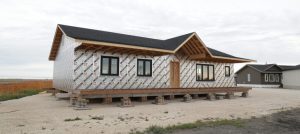You won’t find these two words in a building code; yet, the homes and buildings we live in have a major impact on our health and comfort. In this post, we will discuss various aspects of our well-being that are tied directly to our homes and find out why Halo is the optimal insulation product for building healthy, comfortable environments.
First, let’s agree on the common culprits behind illness and discontent in our homes; these are:
- moisture,
- contaminants, including radon, and
- inconsistent temperatures
Each of these can lead to feelings of unease, or worse, a medical condition. And did you know that most of these factors stem right from a home’s poor envelope assembly?
An envelope is a home’s protective skin. It includes the exterior finishes, sheathing, vapor barriers, insulation, drywall, doors, windows, and roofs – all barriers to the exterior. When these barriers don’t work, the risk factors above are more likely to get in our homes and make us sick.
To optimize a home’s envelope, we need proper moisture control, airtightness, an effective barrier to radon, and low-VOC building materials.

How Does Moisture Get in a House?
Thanks to our reliance on water – the average American household uses 300 gallons daily, 12% of which is attributed to leaks – our dwellings have a myriad of moisture sources. These include:
- plumbing leaks
- cooking, showering, hand washing
- laundry
- humidifiers
- poorly vented clothes dryers
Then there’s moisture that invades homes from the outdoors, such as roof and wall leaks, and poor drainage. Regardless of the source, plenty of water accumulates in our homes. Whether in liquid or gaseous form, it gets behind our fixtures, and into wall cavities.
Once inside a wall, moisture enables outbreaks of mold, mildew, and rot. These fungal growths thrive in wet environments with lots of organic matter to feast on, making wood-framed walls an excellent place for them to spread. They flourish out of sight and out of mind until they trigger allergies, respiratory ailments, and scariest of all – structural defects in the wooden frame.
What’s the best way to prevent moisture build-up in walls?
With an Envelope That Can Breathe!
Now, that may sound counterintuitive: don’t we want our walls to be impenetrable to air and moisture? The answer is complex. Yes, we don’t want cold drafts and water getting in, but we still want vapor and moisture to dry to the outside.
With most insulating products, notably extruded polystyrene (XPS), you just can’t achieve this balance. These boards block and trap everything in their path.
Halo’s Exterra, on the other hand, is designed specifically to help moist walls dry to the outside. Exterra boards are considered permeable up to a thickness of 2 inches – enough to add an impressive R-10 to the wall! Yet, these graphite polystyrene (GPS) boards come with a perforated laminate layer that allows moisture to escape, leaving the wall cavity dry and healthy.
Why Does Airtightness Matter in Homes?
The outside air is laden with contaminants. Some common ones include:
- dust
- pollen
- vehicle exhaust
- factory emissions
- ground-level ozone (aka smog)
While open doors and windows present the simplest path, these particles also pass through a building’s walls in ways we can’t control: through patchy envelopes. When this happens, the occupants breathe these harmful contaminants and suffer the ensuing health effects. This is why ventilation systems are designed to filter out these tiny particles out of the air that’s blown indoors.
But What Good Are the Filtration Systems If the Walls Let Air Flow in and Out Unchecked?
To control airflow and let ventilation systems scrub pollutants from the air, a building’s walls must be airtight. When taped at its joints, Exterra boards provide a continuous layer of insulation, adding to the overall airtightness of a home. Here’s a real-life example: a home in Kamloops, BC, managed to achieve only 1.36 Air Changes per Hour (ACH) thanks to its Exterra insulation boards. That’s well below the current Stage 4 code requirement of 1.5 ACH maximum.
What’s more, Exterra’s continuity helps avert cold spots. These often stem from thermal bridging – a way for heat to escape through a wall, like via a stud. When a continuous, taped layer of insulation is added, heat no longer has this means of a quick escape, and the wall retains a stable temperature.
What’s the Best Way to Block Radon?
In a home, radon is an invisible enemy. This colorless, odorless gas is the second leading cause of lung cancer after smoking. It emits as Uranium breaks deep under ground, and can easily diffuse through typical slabs on grade.
To block radon, an adequate barrier should be placed beneath the slab on grade. Most contractors rely on 6 mil polyethylene for this purpose, and it’s simply not the best solution. Halo’s Subterra Plus, on the other hand, has 7 times more radon resistance than the 6 mil poly – a fact confirmed by the National Research Council’s (NRC) Radon Diffusion Test.

Is Indoor Air Quality Worse Than Outdoor?
It’s a surprise to many that indoor air is often more polluted than the air outside. But it’s true, and because we spend most of our time indoors, the effects of poor indoor air quality (IAQ) should not be taken lightly.
A good chunk of indoor air pollution comes from Volatile Organic Compounds (VOCs) – gaseous chemicals emitted from solid materials at room temperature. Modern homes are packed with VOCs, many of which continue to off-gas from building materials for years after construction.
To help buyers and producers identify low-VOC products, the Underwriters Laboratories (UL) Environment unit started the GREENGUARD Certification program. The GREENGUARD Gold Certification is awarded to products that meet certain health-based criteria and contain low levels of VOCs. All of Halo’s GPS-core series insulation boards are certified GREENGUARD Gold. So by choosing Halo, you commit to a material that will not off-gas once construction is complete!

Don't miss a thing!
Subscribe for exclusive content, insider industry news and limited edition webcasts.
Wrapping it up
You can’t ensure health and comfort in homes by simply following the building code. Because most causes of discomfort and illness stem from a low-quality envelope, you need the right products to make your homes comfortable. By building with Halo, your homes will be moisture-resistant, airtight, and equipped to counter radon.









